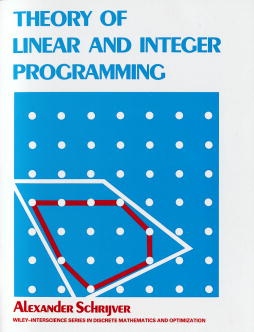Description
Unlock the secrets of optimization with the 'Theory of Linear and Integer Programming' by Alexander Schrijver. This comprehensive volume is an essential resource for graduate students, researchers, and professionals in operations research, mathematics, and computer science. Dive deep into the intricacies of linear programming and integer programming with its thorough exploration of algorithms and complexity analysis. With 484 pages of insightful content published by John Wiley & Sons, this book not only covers foundational topics but also highlights significant recent developments in the field.
The text is meticulously structured to facilitate understanding, beginning with an introduction and progressing through complex topics, including linear algebra, polyhedra, and the simplex method. Key chapters focus on algorithms for linear diophantine equations and the complexities surrounding both linear and integer programming. This resource is enriched with historical surveys, extensive bibliographies, and real-world applications, particularly in combinatorial optimization, making it a vital addition to any academic library. Whether you are looking to enhance your knowledge base or tackle complex optimization problems, this book serves as a valuable reference. Join the ranks of scholars and practitioners who trust Schrijver's work to navigate the challenging landscapes of linear and integer programming.
The text is meticulously structured to facilitate understanding, beginning with an introduction and progressing through complex topics, including linear algebra, polyhedra, and the simplex method. Key chapters focus on algorithms for linear diophantine equations and the complexities surrounding both linear and integer programming. This resource is enriched with historical surveys, extensive bibliographies, and real-world applications, particularly in combinatorial optimization, making it a vital addition to any academic library. Whether you are looking to enhance your knowledge base or tackle complex optimization problems, this book serves as a valuable reference. Join the ranks of scholars and practitioners who trust Schrijver's work to navigate the challenging landscapes of linear and integer programming.

